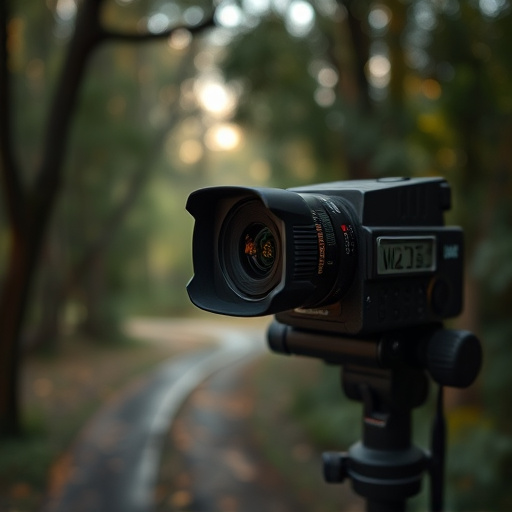Battery-powered wireless spy cameras, with their compact design and remote access via smartphone apps, pose significant privacy challenges due to their concealment, motion sensors, and long battery life. Detecting these devices requires a multi-faceted approach combining specialized lighting equipment for IR/UV emissions, thermal imaging technology, and expert analysis of heat signatures and lighting patterns, making it harder for them to operate unnoticed.
Unveiling hidden threats, battery-powered wireless spy cameras pose a subtle yet significant risk to privacy. This comprehensive guide explores the intricate world of disguised camera identification using light as a crucial tool. We delve into understanding these compact, wireless devices and their operational nuances. The article highlights advanced testing methods to detect hidden cameras, offering practical strategies to safeguard against them. By unraveling the secrets behind battery-powered spy cameras, we empower individuals to protect their personal spaces.
- Understanding Battery-Powered Wireless Spy Cameras
- The Role of Light in Camera Identification
- Testing Methods for Disguised Camera Detection
- Effective Strategies to Avoid Battery-Powered Spy Cameras
Understanding Battery-Powered Wireless Spy Cameras
Battery-powered wireless spy cameras have emerged as a prevalent concern in modern security and privacy discussions. These compact, discreet devices are designed to capture images or videos surreptitiously, often relying on internal batteries for continuous operation. Their wireless capabilities allow for remote access via smartphone apps, making them easily concealable in various environments. From homes and offices to public spaces, these spy cameras can be hidden behind everyday objects, posing a significant challenge to privacy.
Understanding their functionality is crucial when identifying potential risks. These cameras typically feature motion sensors that trigger recordings, ensuring they only capture relevant footage. The battery life varies among models, with some offering extended periods, making them ideal for long-term surveillance. Additionally, their compact size and remote access capabilities make them easily portable and adaptable to different settings, further complicating detection.
The Role of Light in Camera Identification
In the realm of hidden surveillance, the subtle art of identifying disguised camera locations relies heavily on the science of light. Battery-powered wireless spy cameras, known for their discreet nature, often employ unique lighting strategies to blend into their surroundings while capturing footage. These devices utilize low-light sensors and advanced LED technology to minimize visible light emissions, making them nearly invisible to the naked eye. By understanding how light interacts with these hidden cameras, users can uncover their presence, especially in environments with varying light conditions.
The challenge lies in recognizing the subtle differences in illumination patterns. For instance, a Battery Powered Wireless Spy Camera might adjust its lighting to match ambient light during the day and then switch to a discrete infrared glow at night, leaving behind hints that trained eyes can detect. By analyzing these light variations, one can decipher the location of such cameras, ensuring privacy and security measures are in place.
Testing Methods for Disguised Camera Detection
Testing disguised camera identification requires a comprehensive approach, especially when dealing with battery-powered wireless spy cameras that are designed to operate discreetly. One effective method is utilizing specialized lighting equipment to detect infrared or UV emissions, which many hidden cameras emit due to their night vision capabilities. By shining specific wavelengths of light and analyzing the reflected or emitted signals, experts can uncover the presence of these devices. This process involves advanced sensors and software that can identify subtle anomalies in lighting patterns, revealing the location of hidden lenses and sensors.
Additionally, thermal imaging technology plays a crucial role in this testing procedure. Heat signatures can indicate electronic activity, and when applied to potential camera sites, unusual warmth may suggest the operation of hidden cameras, especially in locations with minimal natural heat sources. Combining these testing methods ensures a thorough investigation, making it harder for battery-powered wireless spy cameras to remain undetected.
Effective Strategies to Avoid Battery-Powered Spy Cameras
To avoid battery-powered wireless spy cameras, it’s crucial to be proactive in your search for potential hidden devices. One effective strategy is to conduct regular visual inspections, especially in areas where privacy is a concern, such as bedrooms, bathrooms, and offices. Look for any unusual fixtures or objects that might indicate the presence of a camera, like small LED lights or tiny lenses. Even minor discrepancies can be red flags; pay attention to the arrangement and positioning of light sources and shadows.
Additionally, utilizing specialized detection tools designed to identify hidden cameras can significantly enhance your efforts. These tools often include infrared scanners and magnetic field detectors that can uncover battery-powered devices hidden behind walls or in other hard-to-reach places. Regularly updating security software and being vigilant against phishing attempts targeting surveillance equipment is also vital. By combining these strategies, you can create a robust defense against battery-powered wireless spy cameras, ensuring a safer digital environment.
Battery-powered wireless spy cameras pose a significant threat to privacy, but understanding their unique characteristics, such as light usage, can empower individuals to protect themselves. Through advanced testing methods and strategic precautions, it’s possible to detect and avoid these disguised devices. By staying informed about the latest trends in camera technology and adopting proactive safety measures, folks can navigate today’s digital era with enhanced peace of mind, ensuring their personal spaces remain free from unwanted surveillance.
